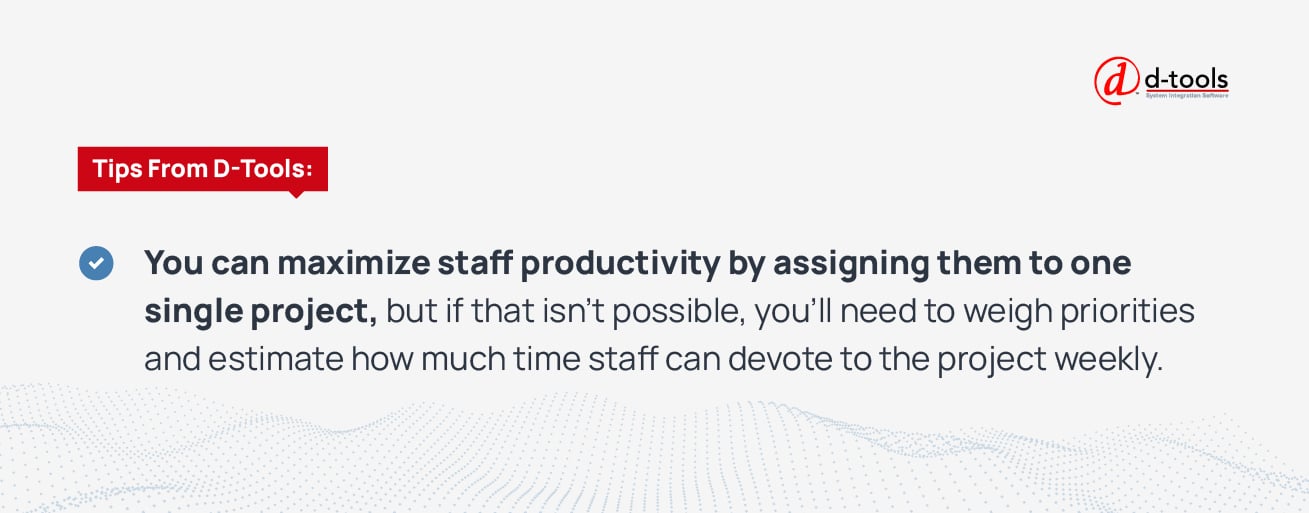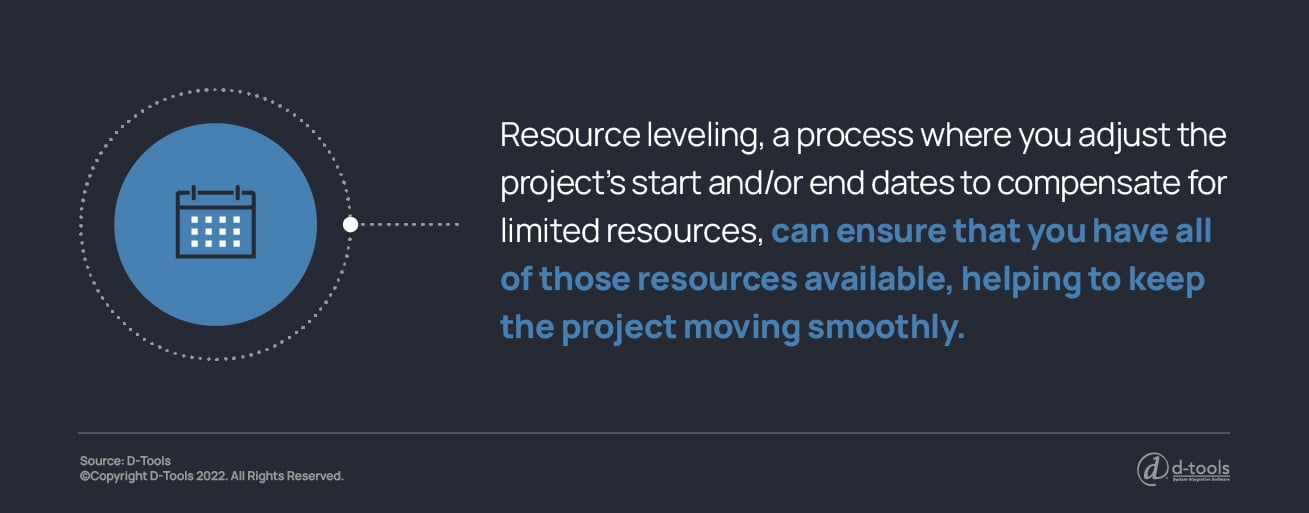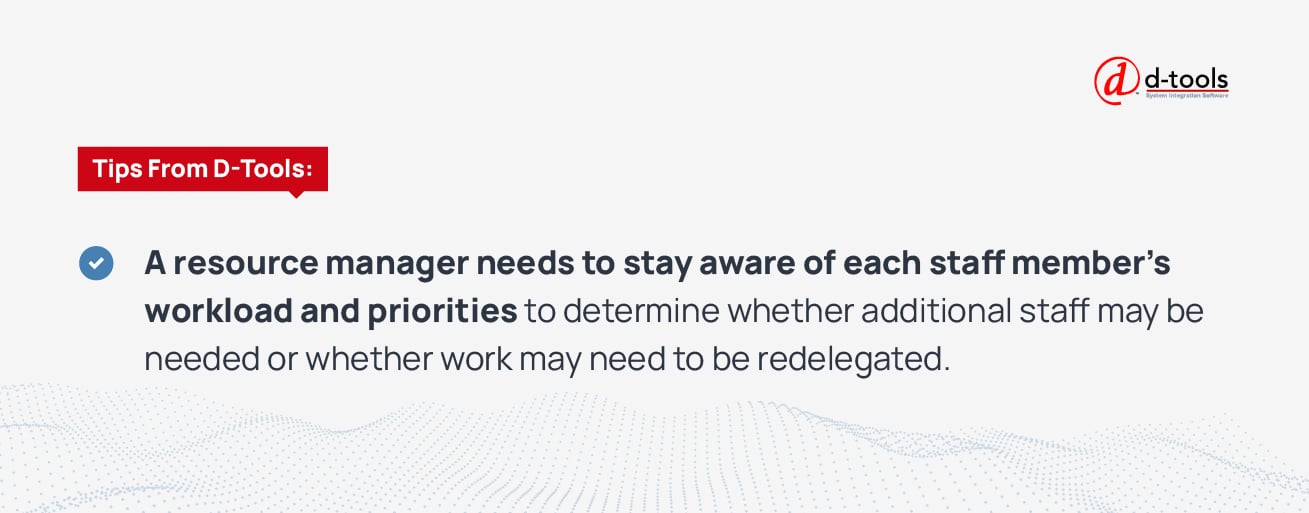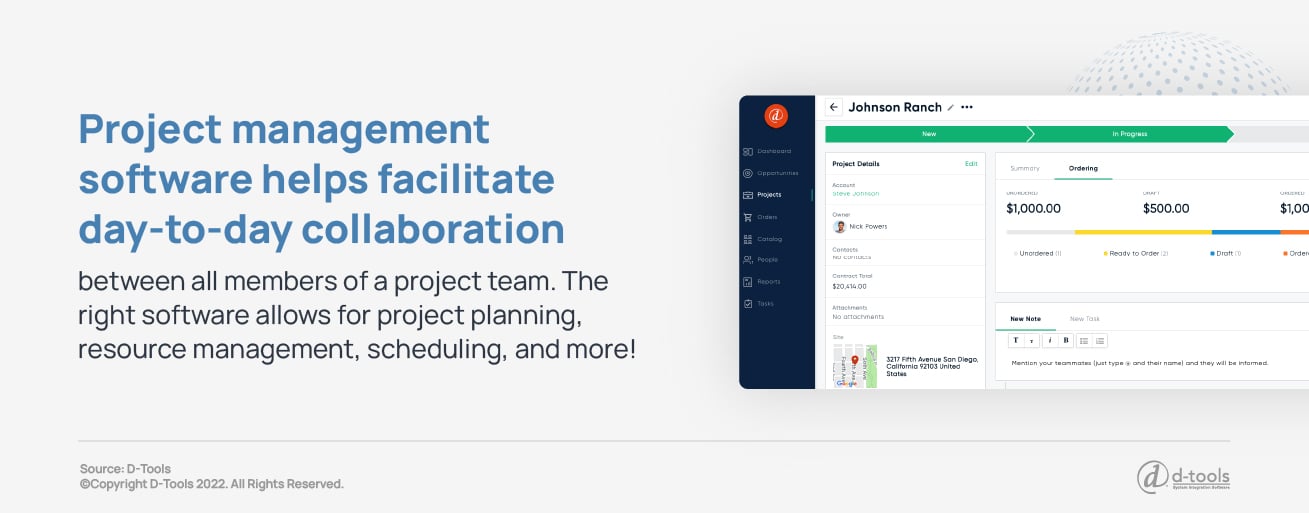Successfully planning, managing, and completing a project requires the coordination of many elements. One of the most important is a project’s required resources.
Resource management can quickly become a complicated process, particularly when working on a project that requires staff, material, equipment, and facility resources. To successfully manage those resources, you’ll need to utilize multiple tools and techniques.
8 of the Best Resource Management Tools and Techniques
Incorporating these resource management tools and techniques into your processes can increase operational efficiency, create a smoother resource management experience, and even result in better project outcomes.
1. Resource Estimation
One of the first steps in any project is identifying the types of resources needed. You’ll need to work with project managers to discuss the different project phases, the end goal, and the staff time, equipment, and supplies necessary to complete each phase and finalize the project.
More importantly, you’ll need to estimate how much of each type of resource is needed. This is where the resource planning process can become challenging, especially when dealing with variable resources like staff time.
Estimating staff time requires you to have a rough idea of how much time is needed for each project phase. Often, that requires breaking down phases into individual tasks and then evaluating staff time needs for each task. When working on a complex project, this process can take significant time, so it’s essential to start your estimation process early on.

It’s also important to determine whether staff will be dedicated solely to the project or if the project responsibilities will need to be balanced with other tasks. You can maximize staff productivity by assigning each team member to one project, but if that isn’t possible, you’ll need to weigh priorities and estimate how much time staff can devote to the project weekly.
As you estimate, it’s always better to have more resources than you actually need, but you’ll also need to balance your resource estimation with your project budget. Overestimating staff time can be a good problem to have later on in the project. Underestimating your resources may leave you scrambling to identify solutions, and it could delay task completion and ultimately cause the whole project to fall behind deadline.
>> Related Read - How to Manage Resources Across Multiple Projects
2. Resource Scheduling
Estimating required resources becomes more complicated when considering the timeframe in which the project and individual tasks need to be completed. This is when resource scheduling comes into play.
In resource scheduling, your goal is to assign appropriate resources to each step of the project, allowing those steps to be completed on time. Scheduling resources becomes complicated when individual steps need to be completed during certain times. When scheduling staff time during those tasks, weigh staff availability against the changing staff hours that the project will need as it progresses.
As you schedule resources, you’ll likely run into situations where resources are limited or not available when they’re needed. In these instances, you’ll need to consider solutions like resource leveling and smoothing.
3. Resource Leveling and Smoothing
Resource leveling and smoothing become part of most projects. These are adjustments that can be made when faced with obstacles during the course of your project.

Resource leveling refers to a process that adjusts a project’s start and/or end dates to compensate for limited resources. You might encounter a situation in which staff are not available to start a project on time. Or there may be a time when the required rental equipment is due before your project can be completed. In these instances, adjusting the project’s schedule can ensure all needed resources are available, so the project continues to run smoothly.
There are situations when a project’s start or end dates can’t be adjusted. In these cases, the resource smoothing technique can be effective. Smoothing resources means adjusting which resources are available during different project phases. This helps keep the project on deadline without restricting the work that’s performed.
Resource leveling and smoothing often work best when used in tandem. Determining what needs to be prioritized in each situation and having a sense of whether deadlines can be adjusted will result in a solid goal-sharing plan and overall stronger outcomes.
>> Related Read - AV Project Management: What It Is & How to Do It Effectively
4. Communication Facilitation
To successfully manage resources throughout a project’s duration, it’s important to establish great communication from the onset. This communication needs to occur between project managers, team supervisors, resource managers, team members, and anyone else who plays a role in the project.
Facilitating this communication requires a multi-prong approach. It can be helpful to develop communication procedures for the project so everyone involved knows who they should be reaching out to in different situations. This type of procedure ensures that key project members won’t be left out of important communication.
Another effective approach is to schedule standing meetings with all key project members. At a minimum, these meetings should occur before the project enters its next phase. However, more frequent meetings are helpful for more complex projects.
5. Team Management

Resource managers hold an important role in team management. Sharing information about available resources, resource plans, and changes affecting a team’s work is an important element in keeping that team productive and motivated.
When it comes to managing staff time and workloads, a resource manager can directly affect staff morale and capabilities. Overloading staff with too much work can lead to burnout, frustration, and missed deadlines. A resource manager needs to stay aware of each staff member’s workload and priorities to determine whether additional staff may be needed or if work needs to be redelegated.
6. Negotiation
As you gather resources for your project, you’ll likely need to enter into negotiations. These can take place in various ways.
In many instances, you may need to negotiate among teams and staff supervisors to ensure staff availability for your project. You might need to offer to move staff around, cover shifts after a project has ended, and make other efforts to get the required staff time.
Strong negotiation skills are also valuable when it comes to buying project materials or renting facilities and equipment. When buying materials in bulk, you may have additional negotiation capabilities and can help bring the material price down. Negotiating is a key element to keeping your project under budget.
>> Related Read - The Ultimate Guide to Project Management
7. Problem Solving
Problem-solving is part of every project. When it comes to project resource management, challenges will arise and needs will evolve and change. You may need to deal with changing deadlines, scope creep, limited resources, and other unexpected issues.
Good, detailed planning with plenty of backup plans can help make the problem-solving process easier. But you can learn from the problems you encounter, too. Keeping a log of the issues that pop up can help improve the performance of future projects by planning for and avoiding repeat issues.
8. Software
While spreadsheets can be helpful in managing resources, they’re cumbersome to maintain. If you’re hand-entering data into spreadsheets, there are many opportunities for errors that can potentially impact budgets and your entire resource allocation plan.

A better option is to use software that helps facilitate day-to-day collaboration between all members of a project team. With software (like D-Tools Cloud or System Integrator) that allows for project planning, resource management, scheduling, task assignment, item tracking, time tracking, and more, you can eliminate back-and-forth email chains while capitalizing on automation to streamline your operations and prevent unnecessary errors.





